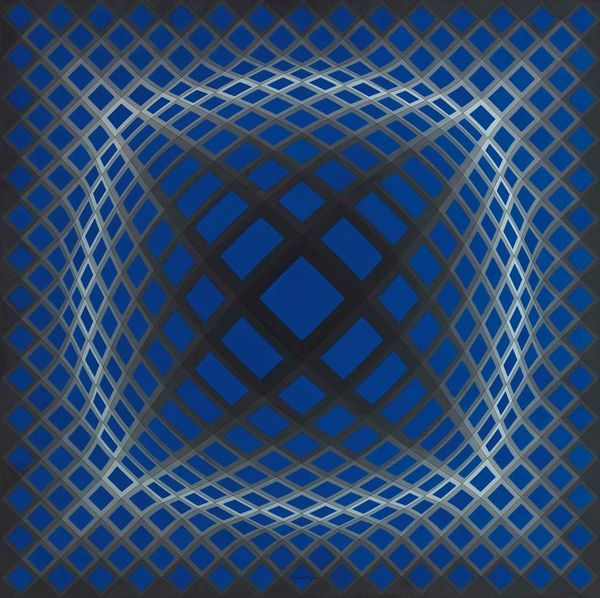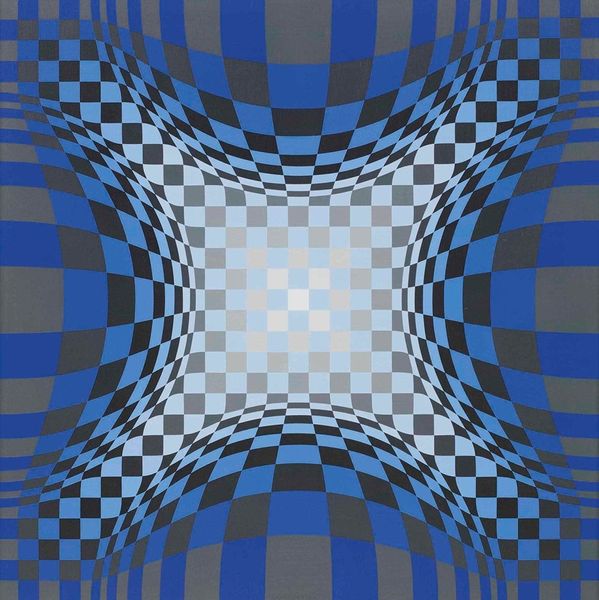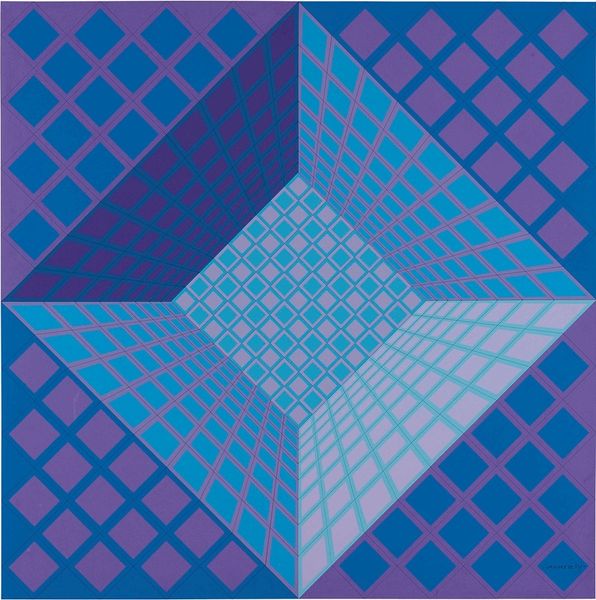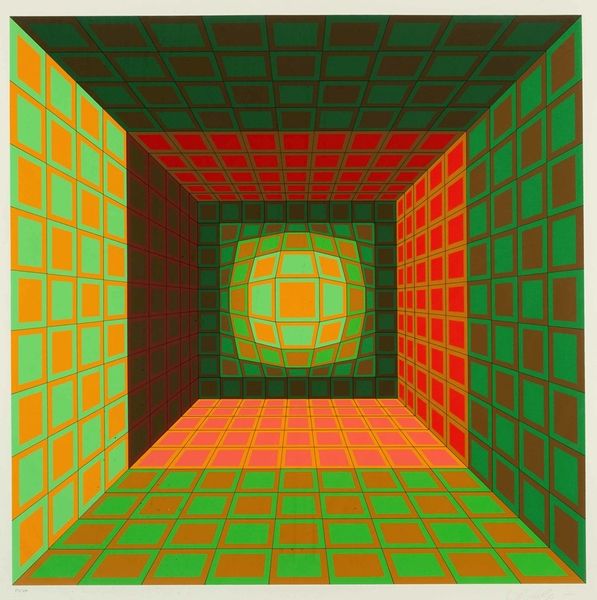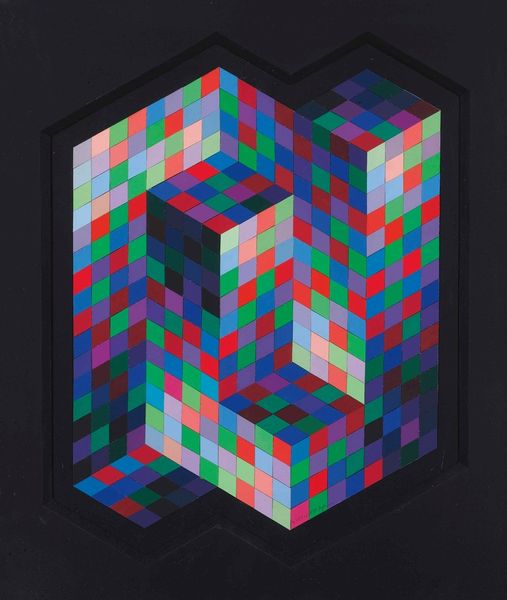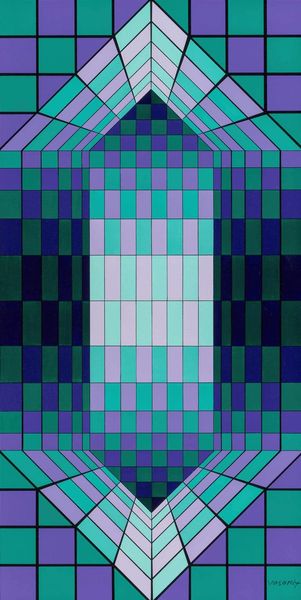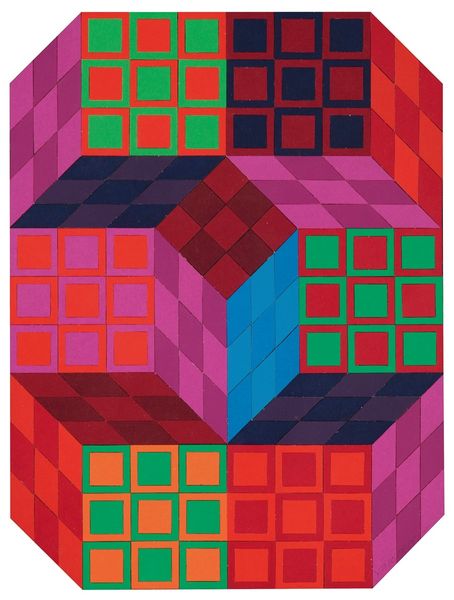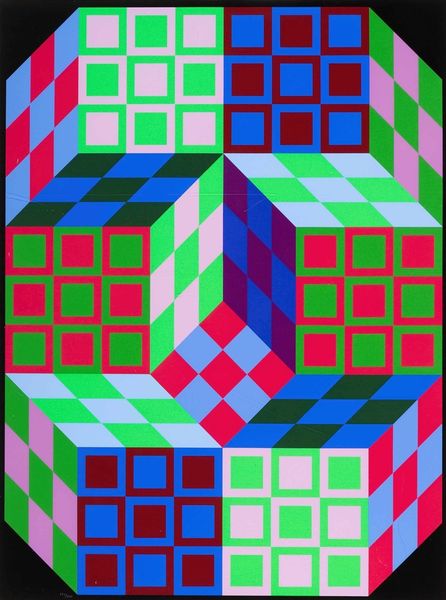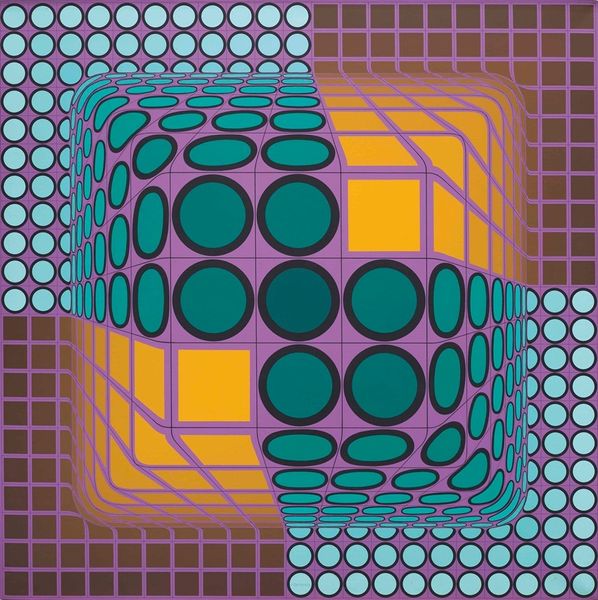
acrylic-paint
#
op-art
#
geometric composition
#
acrylic-paint
#
abstract
#
geometric pattern
#
abstract pattern
#
geometric
#
abstraction
#
pattern repetition
Copyright: Modern Artists: Artvee
Editor: We're looking at Victor Vasarely’s "Tri – Axo" from 1975, made with acrylic paint. It's a mesmerizing geometric form that gives the illusion of depth and dimension. It looks like a hollow cube constructed of smaller cubes, all in varying shades of blues and greens. How can we interpret Vasarely’s intention here? Curator: Well, from a materialist perspective, it’s fascinating to consider how Vasarely utilized acrylic paint. The synthetic nature of the material itself speaks to a shift in artistic production. Prioritizing a manufactured substance rather than natural pigments indicates a focus on industrial processes and reproducibility, even a critique of them. Consider the precision he demands from the medium; this level of clean delineation demands consistency that simply would not be present in traditional art making of this scale. What statement is Vasarely making about the intersection of art and industry through these specific choices? Editor: That's an interesting point. I hadn’t considered the specific materiality of the acrylic paint as a commentary. Curator: The meticulous arrangement of the squares also directs our attention. What kind of labor do you imagine it takes to execute something like this? This piece also exists at the precipice of technology; do you see echos of coming digital manipulation here? The effect is very early computer imaging. Editor: It must've been incredibly painstaking! To execute all those individual squares to form that perfectly angled, consistent, and evenly toned perspective! Curator: Precisely! And what about the consumption of art like this? Is it designed for the elite gallery or for mass production as a print? Thinking about its potential for reproduction also leads to discussions around accessibility, the dematerialization of the art object, and, ultimately, value. What do you make of it? Editor: This has given me a completely new way to view op art. Considering it in the context of material production makes the artwork more connected to real-world processes. Curator: Absolutely. Examining materiality, process, and production pulls us away from simply seeing geometric abstraction. Instead, we find the human effort and socioeconomic contexts embedded within the paint itself.
Comments
No comments
Be the first to comment and join the conversation on the ultimate creative platform.

